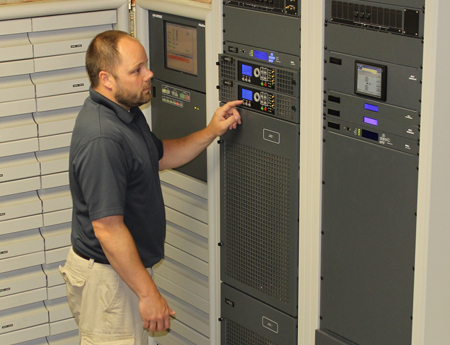Clearing the View For Better Video

In the last two years, much of the attention on transmission technologies has been around the development of next-generation standards that would easily handle both UltraHD broadcasts and better delivery of video to mobile devices.
Happily, several notable advances have now been put into practice, with both broadcasters and cellular phone operators pushing the evolution of broadcasting technology forward.
In broadcast TV, that has led to greater investment in new transmitters—a bold initiative in a time of FCC-generated uncertainty. “With the upcoming spectrum auctions and spectrum repack, it may seem counter-intuitive that now would be a good time to invest in new wireless transmission systems,” says Rich Redmond, chief product officer at GatesAir. “Twelve months ago, a lot of broadcasters were saying that buying a new transmitter was the last thing they wanted to do. But since then a lot of them have…started making investments.”
That change of heart reflects the availability of lower-cost solid state transmission systems and the use of software to control transmitters. “In the past, U.S. broadcasters transmitting a higher power level could only do that using tubes, which were complex and expansive to operate,” Redmond says. “The newer…solid state systems have much lower energy costs and are simpler to operate, so you need fewer people at the stations.”
Many utilities also have incentive programs for energy saving technologies that further reduce upfront costs, he adds.
Beyond Unicast
Meanwhile, major telcos are testing and deploying LTE Broadcast systems to reduce the cost of delivering video over cellular networks.
Broadcasting & Cable Newsletter
The smarter way to stay on top of broadcasting and cable industry. Sign up below
These technologies are not, however, compatible with the mobile signals some broadcasters have launched that use the ATSC mobile DTV standard ATSC-M/H (A/153). But advances in LTE Broadcast systems could have an important impact in the next few years.
Engineers are likely to include aspects of the LTE Broadcast systems in the new ATSC 3.0 next-generation broadcast standard currently under development to help stations broadcast video to mobile devices.
Recent LTE Broadcast systems also offer telcos a way to deliver higher-quality video and to potentially up their competitive game against broadcasters with mobile TV services.
Current cellular networks work on a unicast architecture that makes it difficult for telcos to keep up with rising demand for data and video on mobile devices, which Ericsson estimates will be 12 times larger in 2018 than in 2010.
LTE Broadcast, which is also known as evolved Multimedia Broadcast Multicast Service, addresses that problem by using singlefrequency networks to broadcast video and other content to multiple users. The research group iGR has estimated that these deployments might reduce the amount of network capacity needed by 9.8%, with savings of $60 million to $100 million in capital costs for U.S. mobile operators.
Early tests by Verizon, KPN, Telstra and others have generally occurred in stadiums, where upgraded LTE networks have been used to broadcast video and data relating a game to fans, explains Thorsten Lohmar, an expert on media delivery architecture at Ericsson. But they could also be expanded over larger footprints to deliver live TV events, VOD services and a number of other applications.
“The system works,” Lohmar says. “The next step is for operators to team up with content providers to start deploying new services.”
LEADERS OF THE REPACK
Just how the upcoming FCC spectrum auction and subsequent repacking of spectrum will play out remains an open question. But some technologies are being developed to help broadcasters address the inevitable changes. Noting that repacking will lead to channel changes, Rich Redmond, chief product officer, GatesAir, says that, “the frequency is determined by software, so you can program the transmitter for the new channel. You may have to adjust or replace other equipment but the transmitter can be tuned by software.”
These developments can help broadcasters adapt their workforces to the newer IT- and IP-based infrastructures. At a time when many stations are having a much harder time finding engineers familiar with older RF tube technologies, the newer transmission systems are easier to operate and are based on technologies well understood by younger engineers with an IT background. “They’re appealing because they address both the aging of the equipment and the aging of the workforce,” Redmond says.
